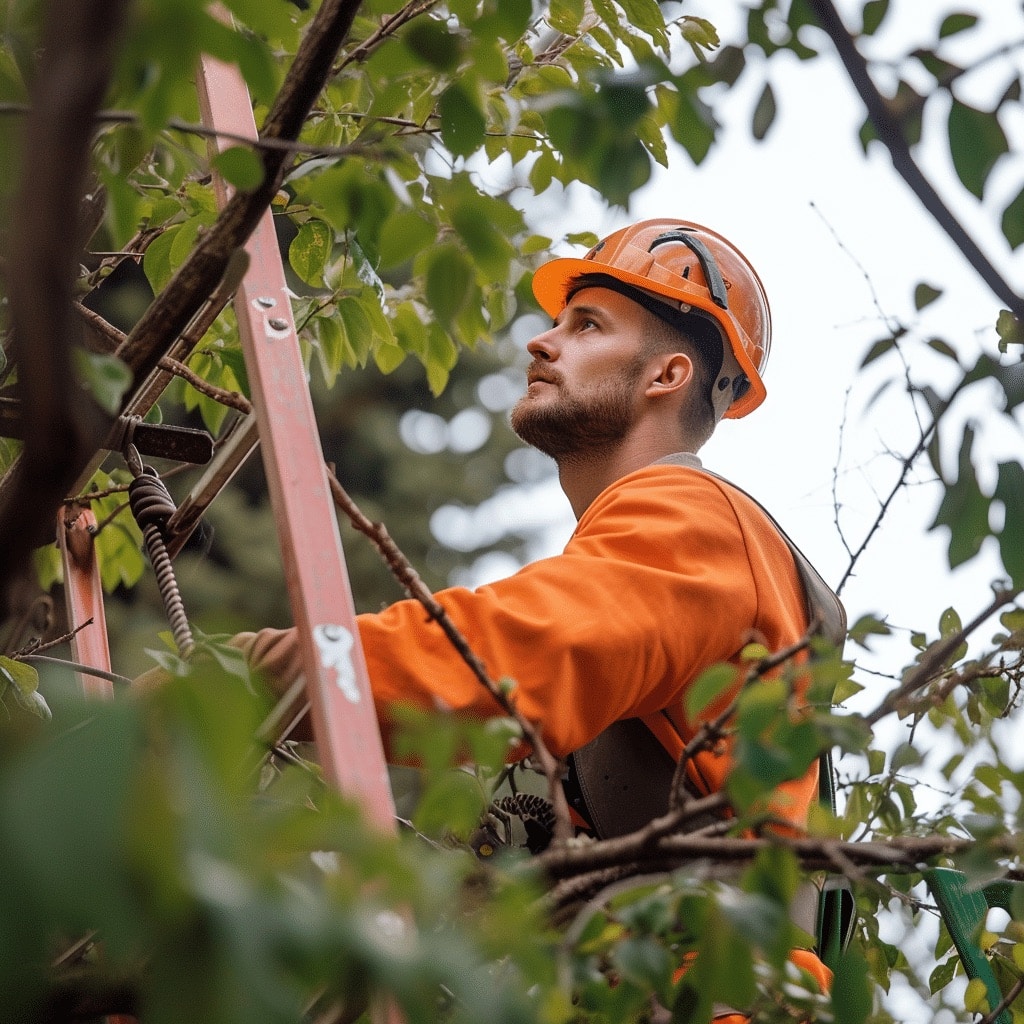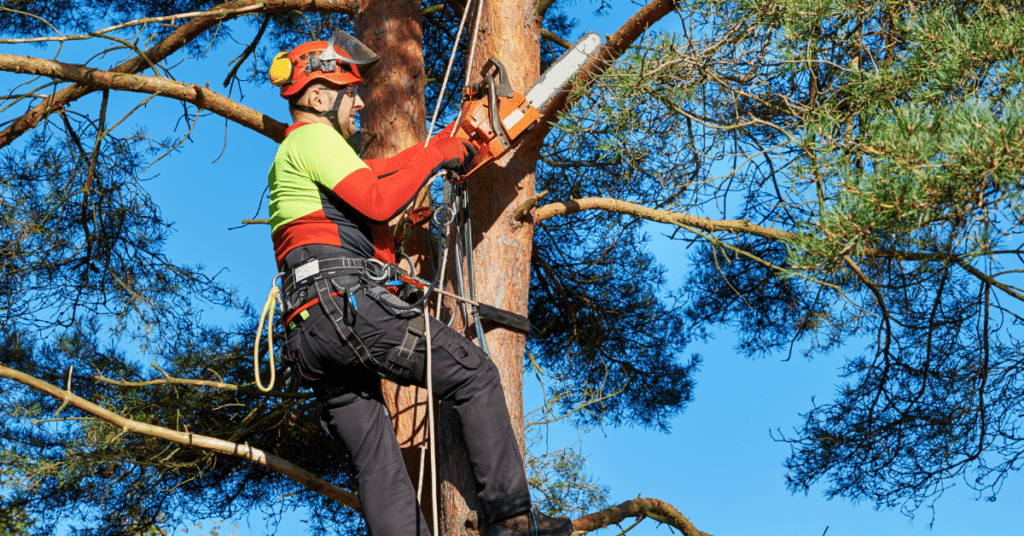By: Shelby McCullough| Published: June 11, 2024
Tree trimming is more than just an aesthetic upgrade for your property; it plays a crucial role in maintaining the health and safety of trees. At McCullough Tree Service, we understand the multifaceted benefits of tree trimming, ensuring your trees not only look their best but also thrive for years to come. Let’s explore the myriad benefits of tree trimming, structured to provide you with detailed and engaging information.
Health and Growth
Promotes Tree Health
One of the primary benefits of tree trimming is promoting the overall health of trees. By removing dead or diseased branches, trees can allocate resources to healthier parts, ensuring better growth and vitality.
- Removes Diseased Branches: Cutting away infected branches prevents the spread of disease to other parts of the tree.
- Improves Air Circulation: Thinning the canopy enhances air circulation, reducing the risk of fungal growth.
- Enhances Sunlight Penetration: Trimming allows more sunlight to reach lower branches and nearby plants, promoting photosynthesis and growth.

Encourages Fruit Production
For fruit-bearing trees, proper trimming is essential to improve fruit quality and yield.
- Energy Redirection: Pruning helps redirect the tree’s energy to fruit-bearing branches, enhancing fruit development.
- Disease Prevention: Removing dead or diseased branches reduces the likelihood of infections that could affect fruit production.
Safety and Hazard Prevention
Reduces Risk of Falling Branches
Regular tree trimming is crucial for safety, particularly in areas prone to storms and high winds.
- Prevents Property Damage: Overgrown branches can fall during storms, causing significant damage to homes, vehicles, and power lines.
- Enhances Personal Safety: Reducing the risk of falling branches keeps people safe from potential injuries.

Clearance for Structures and Utilities
Ensuring proper clearance from buildings, power lines, and other structures is another significant benefit of tree trimming.
- Protects Infrastructure: Overhanging branches can damage roofs, siding, and utility lines, leading to costly repairs.
- Improves Visibility: Trimming trees near driveways and walkways enhances visibility for drivers and pedestrians.
Aesthetic and Landscape Enhancement
Enhances Property Appearance
Well-maintained trees contribute significantly to the aesthetics of any property.
- Shapes Trees: Trimming helps shape trees, improving their symmetry and appearance.
- Boosts Curb Appeal: A well-groomed landscape with neatly trimmed trees enhances the overall look of a property, making it more attractive to visitors and potential buyers.

Promotes Healthy Growth Patterns
Strategic trimming can guide the growth of young trees, ensuring they develop strong and healthy structures.
- Controls Growth Direction: Pruning helps direct growth, preventing future issues with structural stability.
- Encourages Balanced Growth: Removing competing branches ensures better nutrient distribution and healthier trees.
Environmental Benefits
Improves Air Quality
Trees play a vital role in improving air quality, and healthy, well-maintained trees are more effective at this.
- Enhances Oxygen Production: Healthy trees produce more oxygen, benefiting the environment and human health.
- Reduces Pollution: Trees filter pollutants from the air, contributing to cleaner air in urban areas.
Supports Local Wildlife
Maintaining healthy trees supports local wildlife by providing habitats and food sources.
- Creates Habitats: Trimmed trees with healthy growth provide shelter for birds, insects, and other wildlife.
- Enhances Biodiversity: Well-maintained trees contribute to a diverse and balanced ecosystem.
FAQs about Tree Trimming
Why Should I Trim My Trees Regularly?
Regular tree trimming is essential for maintaining tree health, ensuring safety, and enhancing the appearance of your property. It prevents disease, reduces hazards, and promotes healthy growth patterns.
How Often Should Trees Be Trimmed?
The frequency of tree trimming depends on the type of tree and its growth rate. Generally, trees should be trimmed every 3-5 years. However, specific trees like palm trees may require more frequent trimming.
Can Tree Trimming Improve Fruit Production?
Yes, proper trimming can significantly improve fruit production by redirecting energy to fruit-bearing branches and reducing the spread of diseases.
What Are the Signs That a Tree Needs Trimming?
Signs that a tree needs trimming include overgrown branches, branches too close to structures, dead or diseased branches, and trees that have not been trimmed in several years.
Is Tree Trimming Safe to Do Myself?
While minor trimming can be done by homeowners, it is recommended to hire professional arborists for significant trimming to ensure safety and the health of the tree.
Conclusion
Tree trimming is an essential practice for maintaining the health, safety, and aesthetic appeal of your trees and property. By understanding the comprehensive benefits of tree trimming, you can make informed decisions to ensure your trees thrive. At McCullough Tree Service, we are dedicated to providing professional tree care services to promote the health and beauty of your trees. Contact us today to schedule a consultation and experience the transformative benefits of expert tree trimming.

